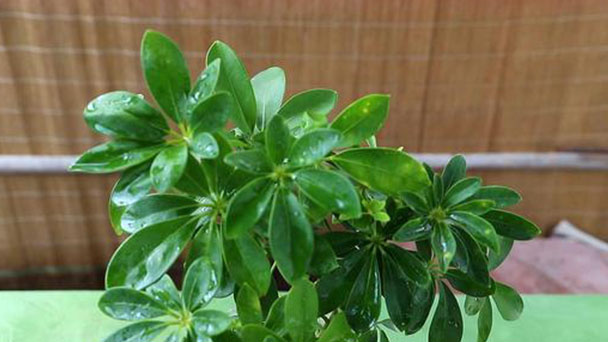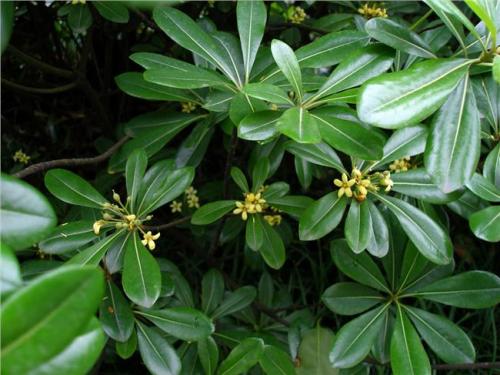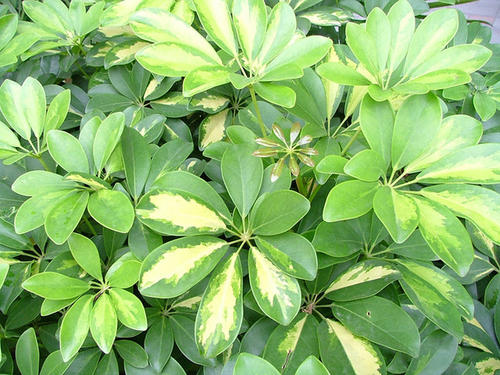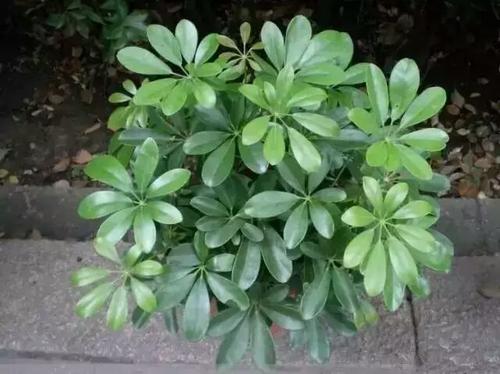How to Grow & Care for Schefflera
Written by Maggie
Dec 15 2022

Schefflera is an extremely common green plant. Its leaves absorb nicotine and other harmful substances from the air and convert them into harmless plant substances through photosynthesis. Many people grow it to improve the environment. So how to care for Schefflera? Let's look together.

Schefflera - Most Common House Plant
How to Care for Schefflera Roots Rot
After Schefflera roots rot, the plant should be removed from the soil in time to replace the soil for cultivation. After that, the root rot of the plant should be pruned appropriately. After pruning, the wound can be disinfected by applying lotion appropriately. Schefflera has strict requirements on soil, and the better soil can be prepared by mixing peat soil, leaf rot soil and coarse mixture. Let’s look at details of how to care for schefflera roots rot.
If not properly watered or fertilized during growing, schefflera root rot will occur. How to care for Schefflera roots rot? If Schefflera root rot is found, the plant should be removed from the soil in time. After the root should be pruned properly where the rot, and then appropriate to the wound on the application of potassium permanganate disinfection.
Schefflera likes to grow in the sandy loam with fertile, loose and good drainage. The replacement soil can be mixed with peat, leaf mould and coarse sand. If you think it is troublesome to mix soil, you can go to the florist to buy special soil. Before changing soil, it is best to put the basin soil under the sun to insulate disinfection, in case the plant is hurt twice.
Fill one third of the pot with soil, but not too full. Try to keep the original soil at the root of the plant in the process of changing the soil to avoid discomfort. After the completion of soil replacement, it is better to place the plants in a semi-shaded and ventilated environment for breeding. When the light is strong, shade the plants appropriately.
At this time the plant is not well adapted to the new soil, so the soil cannot be watered and fertilized. If the soil is too dry, you can properly spray the soil. Schefflera has a very strict requirement on water. In the later stage of breeding, it is necessary to master the amount of watering. Every time when watering, try not to retain water and wet the soil.

How to Care for Schefflera Leaves Falling
If Schefflera loses its leaves during farming, it may be caused by insufficient light, excessive fertilization, unsuitable environment or improper watering, and appropriate measures should be taken according to different circumstances. Schefflera prefers to grow in a warm, moist environment. It is best to keep the plants indoors in a semi-dark, ventilated environment. Let's look at details of how to care for Schefflera leaves falling.
1. Sufficient Light
Schefflera is a leaf-viewing plant and is often planted as a potted plant. The loss of leaves and blackening of Schefflera during planting may be caused by a lack of light. In this case, the plant should be transplanted to a well-ventilated and well-lit environment in time for cultivation. Schefflera requires a lot of light and you can grow Schefflera Trinette outdoors because it's a kind of low-maintenance plant, so just let the plants get plenty of it.
2. Fertilization
During farming, Schefflera leaves fall off and turn black, which may also be caused by fertilizer damage caused by excessive fertilization. If the fertilizer damage is not serious, a large amount of water should be poured to dilute the fertilizer. If the fertilizer damage is serious, it is better to replace the soil farming. Schefflera does not require much fertilizer and it is best to dilute the fertilizer with water each time you fertilize the plant.
3. Environment
Schefflera likes to grow in warm, moist conditions, and if kept in a dark, stuffy environment for too long, it can cause the leaves to turn black and fall off. At this time, the plants need to be transplanted to a ventilated environment for growing. In the later stage of growing, the air circulation must be ensured to be good and the air humidity must reach the standard.
4. Watering
Schefflera has a strict water requirement, and too much watering can lead to waterlogging and loss of leaves. Too little watering can cause the soil to lose water and the leaves to turn black and fall off. When overwatering, it is necessary to stop watering, and timely discharge the excess moisture in the soil. When watering is too little, it is necessary to appropriately increase the number of waterings.

Read Next: Schefflera Propagation Methods
Latest Updated
- Benefits of Bugleweed - 7 Science-backed Health Benefits
- Bugleweed Dangers & Side Effects - Is It Poisonous?
- How to Plant Evergreen Trees - What You Should Know
- When to Plant Evergreens - Grow Guide for Evergreen Trees
- 12 Wonderful Evergreen Shrubs for Your Garden
- 12 Popular Evergreen Plants with Pictures for Beginners
- When And How To Prune A Lilac Bush Like a Pro
- How to Grow & Care for Lilac Vine (Hardenbergia Violacea)
- Japanese Lilac Tree (Syringa Reticulata) Care & Propagation Guide
- Shumard Oak Pros and Cons - What to Know
Popular Articles
- Winter maintenance of Antirrhinum Majus
- How to Grow Terminalia Mantaly Tree
- How to Grow and Care for Crossostephium Chinense
- How to grow Antirrhinum Majus in spring
- Peristeria Elata (Dove Orchid) Profile: Info & Care Guide
- Underwatered Snake Plant (Sansevieria Trifasciata) - Signs And How To Fix
- How to Care for Brazilian Jasmine Plant (Mandevilla Sanderi)
- How to Grow & Care for Graptopetalum Purple Delight in Summer
- Rosa Chinensis (China Rose): Plant Growing & Care Tips
- How to Care for Baby Sun Rose (Aptenia Cordifolia)